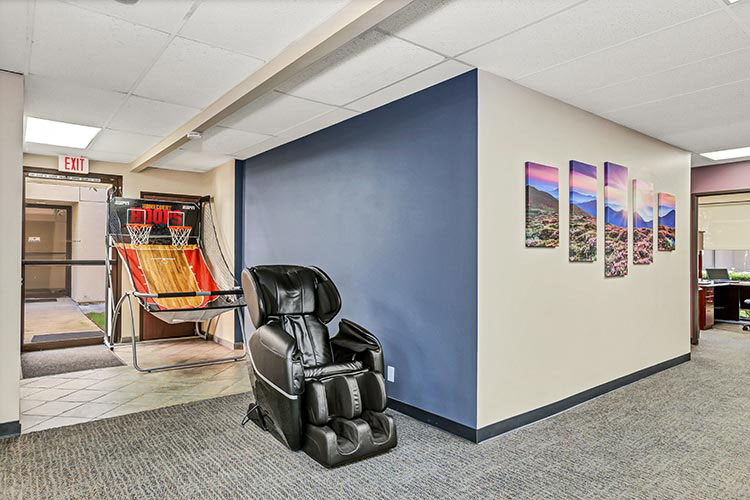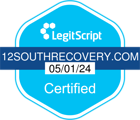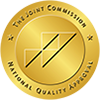Watching a loved one’s struggle with addiction feels like watching them drown from the shore. You see the danger—the physical decline, personality changes, and broken promises—yet they often cannot see the pain they’re causing.
Over 90% of people with addiction don’t believe they need help, creating a barrier to recovery that usually requires intervention. Substance use alters brain chemistry, hindering their ability to view their situation objectively.
An intervention—a structured conversation—can help break through denial and open paths to healing. Properly conducted interventions have success rates over 75%, with many agreeing to seek treatment.
At 12 South Recovery, we’ve guided families through successful interventions, facilitating lasting recovery for those struggling with prescription dependency, heroin, or alcoholism. A well-planned intervention could indeed save a life.

Understanding Drug Addiction Interventions
What Is an Intervention?
An intervention is a carefully planned process where family members, friends, and sometimes employers come together to confront someone about their substance use. However, contrary to some portrayals in media, effective interventions aren’t about accusation or shame. Instead, they focus on expressing concern, offering specific examples of harmful behavior, presenting treatment options, and establishing boundaries if treatment is refused.
The goal is not to force someone into treatment against their will, which rarely leads to lasting recovery, but rather to break through denial and help them see how their addiction affects both themselves and those around them. When presented with the unified concern of people they care about, many individuals become more receptive to accepting help.
When Is an Intervention Necessary?
Knowing when to stage an intervention requires recognizing sure warning signs that casual substance use has progressed to addiction. Consider an intervention when you observe increased tolerance (needing more of the substance to achieve the same effect), failed attempts to cut down or stop using, or withdrawal symptoms when not using. Other signs include neglecting responsibilities at work, school, or home, continuing use despite obvious negative consequences, abandoning previously enjoyed activities in favor of substance use, spending excessive time obtaining, using, or recovering from substances, and engaging in dangerous behavior while under the influence.
Intervention becomes particularly urgent when the person’s behavior creates safety risks, such as driving while intoxicated, mixing dangerous substances like benzodiazepines and alcohol, or showing signs of suicidal thoughts.
Types of Intervention Approaches
Several intervention models have proven effective, each with slightly different approaches. The Johnson Model is the most widely recognized approach, where family and friends gather with the person, share prepared statements about how the addiction has affected them, and present treatment options. The ARISE Model (A Relational Intervention Sequence for Engagement) offers a less confrontational, invitational approach that involves the substance user from the beginning of the planning process when possible. CRAFT (Community Reinforcement and Family Training) focuses on teaching family members skills to encourage their loved ones to seek treatment while improving their quality of life. The Family Systemic Model addresses addiction as a family system issue rather than an individual problem, often involving multiple meetings and family therapy.
At 12 South Recovery, we help families determine which approach best fits their specific situation. The right model depends on factors like the personality of your loved one, the substance being used, and existing family dynamics.
Planning an Effective Intervention
Assembling Your Intervention Team
The composition of your intervention team significantly affects its success. Include family members with meaningful relationships to the person, respected friends who understand the addiction’s impact, and, if applicable, colleagues whose presence highlights professional consequences. A trained interventionist or addiction counselor is crucial to guide the process and manage emotions.
Choose participants who can stay calm, non-judgmental, and loving. Exclude anyone with an unmanaged substance issue, those who might become emotional, or individuals likely to sabotage the intervention or enable ongoing addiction.
Effective interventions typically include 4-6 participants to show united concern without overwhelming the individual..
Gathering Information and Education
Before planning an intervention, educate yourself and all participants about the specific substance your loved one is using, addiction as a disease, treatment options, and any co-occurring disorders. Different drugs create varying patterns of use, risks, and recovery challenges. Knowing if your loved one struggles with alcohol, opioids like fentanyl or OxyContin, stimulants like cocaine or methamphetamine, or other substances helps you prepare appropriate responses.
Understanding how substances affect brain function encourages compassion in the intervention approach. Research treatment programs in advance to present specific options if the person agrees to seek help. Many facing addiction also struggle with mental health conditions like depression, anxiety, or PTSD, making it vital to choose appropriate dual-diagnosis treatment programs.
12 South Recovery offers family education resources to equip intervention teams with accurate information about addiction and recovery options.
Preparing What to Say
What participants say during an intervention can either open doors to healing or reinforce walls of denial. Each participant should prepare a written statement that expresses genuine care and concern, describes specific incidents where the addiction caused problems (without generalizing), avoids accusatory language (“you always” or “you never”), focuses on observable behavior rather than making character judgments, explains how the behavior affects the speaker emotionally, offers recovery support, and clearly states consequences if treatment is refused.
For example, instead of saying, “You’re selfish and don’t care about anyone,” a more effective statement might be: “When you didn’t come to Mom’s birthday dinner because you were intoxicated, I felt hurt and worried about you. I love you and want to support your recovery, but I can’t continue to cover your shifts at work if you don’t get help.”
Having a professional review these statements before the intervention helps refine the language for maximum impact while minimizing defensiveness.
Choosing the Right Time and Place
Timing and setting significantly influence intervention success. Choose a time when the person is least likely to be under the influence. Early morning often works best for this reason. Avoid holidays or high-stress periods unless the situation is urgent. Select a private, comfortable, neutral location where the person feels safe. A family home works well, but avoid spaces with negative associations or distractions. Arrange seating so it doesn’t feel confrontational. A circle works better than having everyone on one side facing the person. Minimize potential interruptions by turning off phones, arranging childcare, and ensuring you have enough uninterrupted time (usually 1-2 hours). Have transportation ready to take the person directly to treatment if they agree, with a bag packed with essential items they’ll need.
Conducting the Intervention
Setting the Tone
The first few minutes of an intervention often determine its course. The intervention leader (usually the professional) should calmly explain the purpose of the gathering, establish ground rules about speaking and listening respectfully, emphasize that this meeting comes from a place of love and concern, and create an atmosphere that feels supportive rather than accusatory.
While the person might initially react with anger or attempt to leave, a well-established tone of care and respect increases the likelihood they’ll stay to listen.
Managing Emotional Reactions
Interventions naturally stir strong emotions for everyone involved. Preparing for possible reactions helps maintain focus. If the person becomes defensive or angry, participants should remain calm and avoid matching their emotional intensity, take breaks if needed, but gently persist with the process, redirect focus to specific concerns rather than responding to accusations, and have the intervention professional step in to de-escalate as needed.
If participants become too emotional, they should take brief breaks to regain composure, return to prepared statements rather than speaking reactively, and allow the intervention professional to guide the conversation back on track.
Remember that emotional outbursts—tears, anger, or denial—are normal responses to feeling confronted. These reactions don’t mean the intervention is failing; they’re often part of the process of breaking through denial.
Presenting Treatment Options
Having concrete treatment plans ready presents recovery as an immediate, accessible option. Provide specific information about treatment programs appropriate for the person’s needs and explain how the program addresses their specific substance use (alcohol rehab, opioid treatment, etc.). Outline the levels of care available (detox, residential treatment, PHP, IOP, outpatient services), address practical concerns like time away from work or family, and explain how costs will be managed (insurance coverage, payment options).
At 12 South Recovery, we offer multiple levels of care—from medically supervised detox through outpatient services—that can be customized to each person’s specific needs. Having treatment representatives available by phone during the intervention can help address questions immediately.
Establishing Clear Consequences
If the person refuses treatment, each participant should clearly state what will change in their relationship. These consequences must be specific and actionable, something you’re genuinely prepared to enforce, and focused on withdrawing support for the addiction, not punishing the person.
Examples might include no longer providing financial assistance, not covering for absences at work, changing living arrangements, or setting boundaries around contact when they’re under the influence.
These consequences aren’t threats, but rather necessary changes to stop enabling the addiction. Presenting them clearly helps the person understand the real-world impacts of refusing help.
After the Intervention
If They Accept Treatment
If your loved one agrees to seek help, be prepared to act immediately. Have transportation ready to take them directly to the treatment center and bring a packed bag with essential items they’ll need. Handle necessary logistics like pet care, bill payments, or work notifications, and maintain a positive, supportive attitude during the transition to treatment.
At 12 South Recovery, our admissions team works closely with families to facilitate smooth transitions into treatment, helping with insurance verification, arrival coordination, and addressing any last-minute concerns.
If They Refuse Treatment
If your loved one declines help, remember that this doesn’t mean the intervention failed. Follow through consistently with stated consequences while continuing to express care while maintaining boundaries. Provide information about treatment options for when they’re ready, consider family therapy to support those affected by the addiction, and remain open to staging another intervention in the future.
Many people initially refuse treatment but reconsider after experiencing the consequences or reflecting on what was said during the intervention. The seeds planted during this conversation often bear fruit later.
Call 12 South Recovery Today
Staging an intervention for a loved one requires courage, preparation, and compassion. It may feel intimidating, but remember, you’re offering a lifeline to someone who may not recognize their own struggle. With proper planning and professional guidance, interventions can challenge the denial that supports addiction.
At 12 South Recovery, we assist families from initial planning to treatment program admission. Our expertise in alcohol addiction, opioid dependence, stimulant use, and dual diagnosis enables us to provide specialized care once your loved one agrees to treatment.
If someone you care about struggles with substance use, don’t wait for them to hit “rock bottom.” Contact our team to discuss whether an intervention is appropriate and how our family support services, detox program, and multi-level care can aid their recovery.
Did this guide help you understand the intervention process? Please share it with others who might benefit. Sharing articles like this can spark essential conversations about addiction and recovery.






































